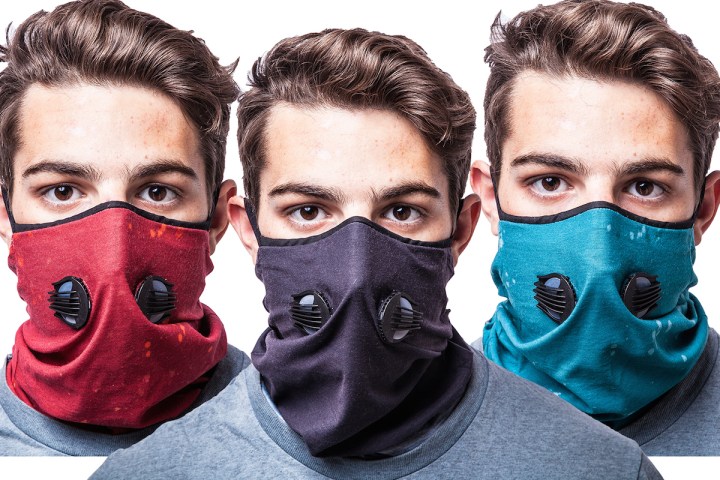
One such offering, currently on Kickstarter, is the Inversion Gaiter 2.0 pollution mask. Offering effective protection and a stylish design, it’s one you might actually want to wear.
Created by Salt Lake City resident Jeff Morton, the Gaiter not only keeps those nasty particulates from entering your system, but also ensures your neck stays nice and warm in cold weather. The mask’s lightweight, breathable polyester material, together with its exhalation valves, makes it comfortable to wear in warm weather, too, offering users year-round protection.
That neck covering also enhances its effectiveness, as the pollution is unable to enter from below.
To prove its power, Morton got an independent lab to run tests on it. The results, which you can see on the mask’s Kickstarter page, were impressive to put it mildly, with “no detected particles penetrating this filter during testing.”

Besides filtering out damaging pollutants floating about in urban areas, the mask can also be used against those pesky pollen and dust microns that affect hay fever sufferers, as well as offering air travelers protection against a plane’s recycled air. It’ll also come in useful if you ever run into a smoky area caused by something like a forest fire, and you might even want to grab it during a particularly severe flu outbreak in your locality.
The mask is available in four flavors — black, blue, coal, and red — and early bird backers can pre-order one for $25. If the team reaches its $30,000 funding goal, free shipping to addresses in the United States and Canada is expected to start in September.
“As pollution gets worse in the U.S. and across the globe, we have more and more days where health officials and the media advise us not to go outside due to air quality,” Morton says. “But you can’t just stop living your life because of this, so this product is the perfect solution for the ever-increasing effects of pollution.”


